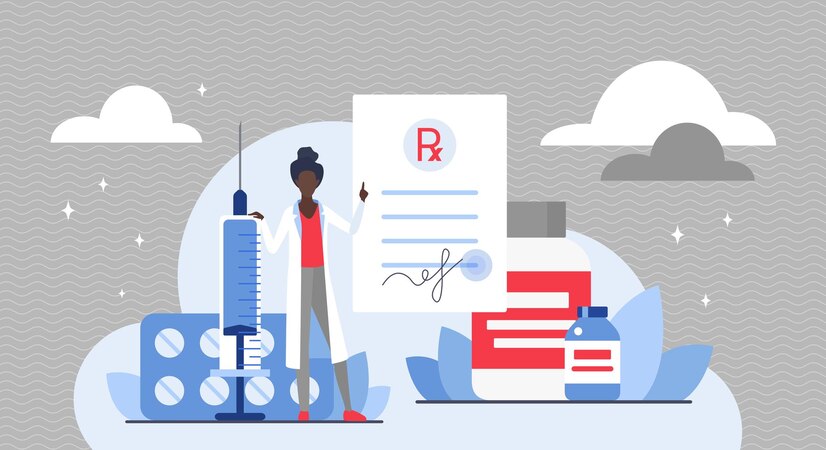Role Of Clear and Accurate Documentation in Medical Billing
Introduction
Medical billing is an essential phase in the complex healthcare industry that makes sure healthcare professionals receive fair compensation for their services. Documentation that is clear and easy to understand is critical to this process. Med Revolve Billing emphasizes the significance of clear and accurate documentation in medical billing. Its profound impact on healthcare providers and patients, as well as the best practices that ensure its effectiveness.
Why Clear and Accurate Documentation Matters
Precise and accurate documentation serves many purposes. First, it ensures that healthcare providers receive the rightful compensation for their services. Insurance companies also heavily rely on documentation to assess the medical necessity of services and to process claims accurately.
Moreover, clear and accurate documentation is necessary for patient care. It makes sure that healthcare providers have a comprehensive and precise record of a patient’s medical history. This is essential for making informed decisions regarding their treatment. It also helps avoid errors and mistakes that could lead to unnecessary tests or treatments.
Impact on Healthcare Providers
Precise and accurate documentation is essential for healthcare providers, as it ensures proper compensation and helps them follow regulations. This improves operational efficiency, enhances patient care, and facilitates communication with the healthcare team.
Avoiding Claim Denials and Delays:
Precise and accurate documentation reduces the chances of claim denials and payment delays. When documentation clearly supports the services provided, insurance companies are more likely to process claims efficiently, ensuring providers receive timely payments.

Compliance with Regulations:
The Health Insurance Portability and Accountability Act (HIPAA) and the Centers for Medicare & Medicaid Services (CMS) establish various regulatory requirements and standards that healthcare providers must follow. Precise and accurate documentation helps providers adhere to these requirements, reducing the chance of penalties and legal issues.
Efficient Operations:
Effective documentation practices optimize the billing process, improving operational efficiency. Providers can spend less time resolving billing issues and more time focusing on patient care.
Better Patient Care:
Precise and accurate documentation contributes to better patient care by ensuring healthcare providers have access to comprehensive and up-to-date patient information. This information is essential for making informed decisions about diagnosis and treatment.
Improved Communication:
Clear documentation facilitates communication among healthcare team members. When everyone can access the same accurate information, they can work together more effectively to coordinate care.
Impact on Patients
Precise and accurate documentation is very important for improving patient care and satisfaction. By ensuring that healthcare providers have access to comprehensive and correct information, documentation helps to personalize care, reduce billing errors, and improve treatment decisions. This also enhances patient safety and increases patient satisfaction.
Personalized Care:
There is clear documentation that healthcare providers can access comprehensive and up-to-date information about a patient’s medical history and condition. This information is necessary for tailoring treatment plans to meet each patient’s specific needs. By providing personalized care, healthcare providers can improve patient outcomes and overall satisfaction with the healthcare experience.
Reduced Billing Errors:
Accurate documentation helps avoid billing errors that can result in unexpected patient costs. By ensuring that all services provided are appropriately documented and coded, healthcare providers can reduce the chances of billing issues and errors. This helps patients avoid financial surprises and contributes to a more transparent and trustworthy healthcare system.
Improved Treatment Decisions:
Precise and accurate documentation provides healthcare providers with a comprehensive view of a patient’s medical history, including previous diagnoses, treatments, and outcomes. This information is essential for making informed decisions about diagnosis and treatment. By having access to accurate documentation, healthcare providers can avoid unnecessary tests and procedures, leading to more efficient and effective care.
Enhanced Patient Safety:
Accurate documentation is necessary for ensuring patient safety. Errors in documentation can lead to mistakes in medication administration, treatment, or diagnosis, which can have severe consequences for patient safety. By maintaining clear and accurate documentation, healthcare providers can reduce the errors and improve patient safety.
Increased Patient Satisfaction:
Precise and accurate documentation leads to smoother billing processes and better communication between patients and healthcare providers. Patients who receive clear and precise bills are more likely to be satisfied with their healthcare experience. Moreover, clear documentation can help patients better understand their diagnosis and treatment plan. This leads to increased trust and confidence in their healthcare providers.

Med Revolve Billing Has Best Practices for Clear and Accurate Documentation
Precise and accurate documentation is necessary in healthcare to ensure quality patient care, accurate billing, and compliance with regulatory requirements. Healthcare providers can improve the clarity and accuracy of their documentation by following these best practices.
Use Clear and Concise Language:
Clear and concise language ensures all stakeholders easily understand your documentation. Avoid using medical terms and symbols that may be difficult for others to understand. Use precise language that accurately conveys the information you want to communicate.
Document in Real-Time:
Documenting information quickly after providing services helps ensure your documentation is accurate and complete. Waiting too long to document can lead to errors and issues, as details may become unclear over time. By establishing this in real-time, you can capture critical information while it is fresh in your mind.
Utilize Electronic Health Records (EHRs):
Electronic Health Records (EHRs) can optimize the documentation process and reduce errors associated with paper records. They also provide easy access to patient information and allow for efficient record sharing among healthcare providers. By utilizing EHRs, you can improve the accuracy and accessibility of your documentation.
Emphasize Comprehensive Documentation:
Thoroughly document all relevant information, including the patient’s medical history, symptoms, diagnosis, and treatment plan. Comprehensive documentation provides a complete picture of the patient’s condition and ensures that all aspects of care are appropriately recorded.
Review and Verify Information:
It is essential to review and verify the information for accuracy and completeness before submitting claims or finalizing documentation. Double-checking the information can help identify and correct errors before they cause issues. Regularly reviewing and verifying documentation helps ensure that it is accurate and up-to-date.
Conclusion
Precise and accurate documentation is vital for fair compensation for healthcare professionals and quality patient care. Med Revolve Billing emphasizes using precise language, documenting in real-time, utilizing EHRs, focusing on comprehensive documentation, and reviewing information for accuracy to improve medical billing efficiency and patient satisfaction.
Engage and Explore
How Med Revolve Billing can increase your revenue and optimize your RCM


















